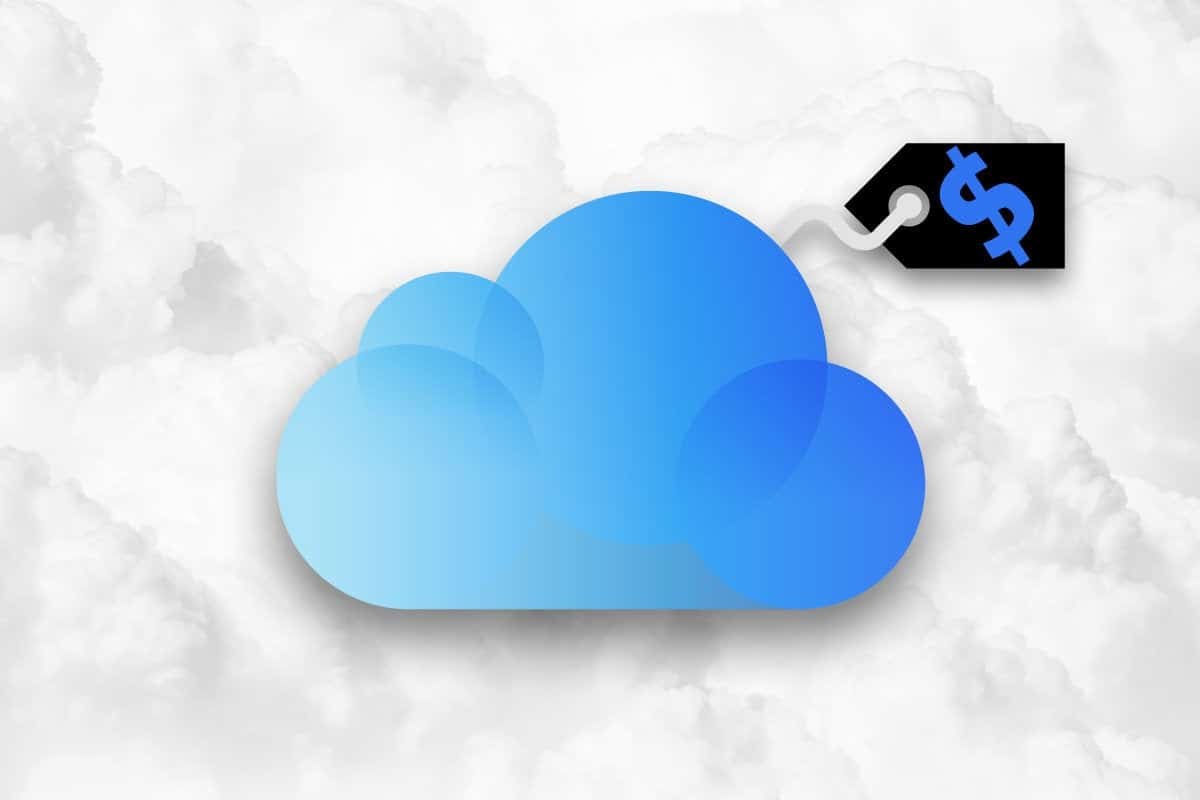
No matter how many iOS or macOS devices you have, Apple only offers iCloud users 5 GB of free storage, a paltry amount considering what its rivals offer. But there are ways to avoid paying for more storage, or at least limit how much extra you pay.
Here are easy-to-follow tips on how to put some of the most data-hungry iCloud features on a diet and save money on iCloud storage.
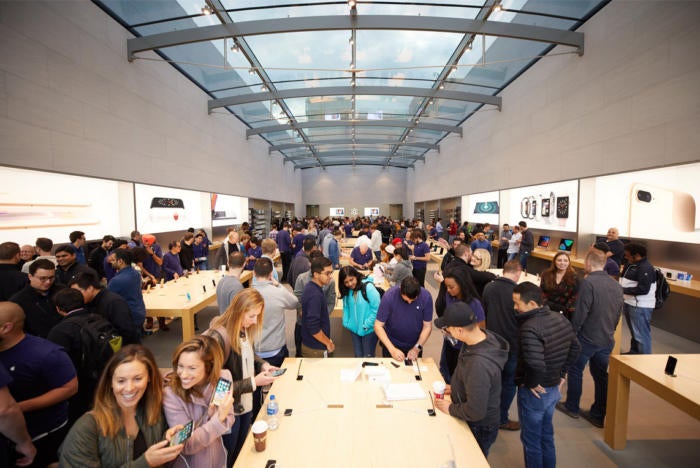 Apple
Apple
No matter how many iPhones, iPads, or Macs you buy, Apple only offers 5GB of free iCloud storage.
Why do you need to manage iCloud storage?
Apple has made iCloud storage a seemingly essential part of all of its products, from Macs to iPads to iPhones to even Apple TV. There are four main items to serve. These include:
- iCloud Backup: It is used for all iPad, iPhone and iPod backups that you have made without using iTunes.
- iCloud Drive: This is all your documents and data from third-party apps on Mac and iOS devices that store data in the cloud. Apple's iCloud document and data service was combined with iCloud Drive in 2022.
- iCloud Mail: Naturally, this is the storage for all the emails and attachments you've received through your iCloud account.
- iCloud Photo Library: This is the storage for all the photos and videos you have ever taken.
That's a long list of things to include in Apple's free 5GB allotment. To get the most out of it, you may want to periodically check how much storage you're using and take steps to migrate some of those storage tasks to non-Apple products and services.
How much does iCloud storage cost?
Apple offers four storage options: 5 GB (free); 50 GB (99 cents/month); 200GB (€2.99/month); and 2TB (€9.99/month).
If you use other services, like Apple Music or Apple TV+, you might find it a good idea to sign up for the Apple One service, which can save you a few bucks.
- The individual Apple One plan includes 50 GB of storage, Music, TV+ and Arcade for €14.95/month.
- The €19.95 Family Plan gives you 200GB of storage, Music, TV+ and Arcade, and lets you share the plan with up to five other people.
- The €29.95 Premier plan gets you 2TB of storage. It also offers News, Music, TV+, Arcade and Fitness+ and the services can be shared with up to five other people.
How much storage are you using?
It's easy to determine how much iCloud storage you're using.
On iOS- Tap the top section (Apple ID) in Settings. Then tap iCloud. You should see a graph detailing how you're using iCloud storage. Tap Manage Storage to access a page that lists all the items that store data in your iCloud (it also tells you how much data each item uses there). You can also delete the data stored for each app or service, but don't do this until you've first backed up that data elsewhere.
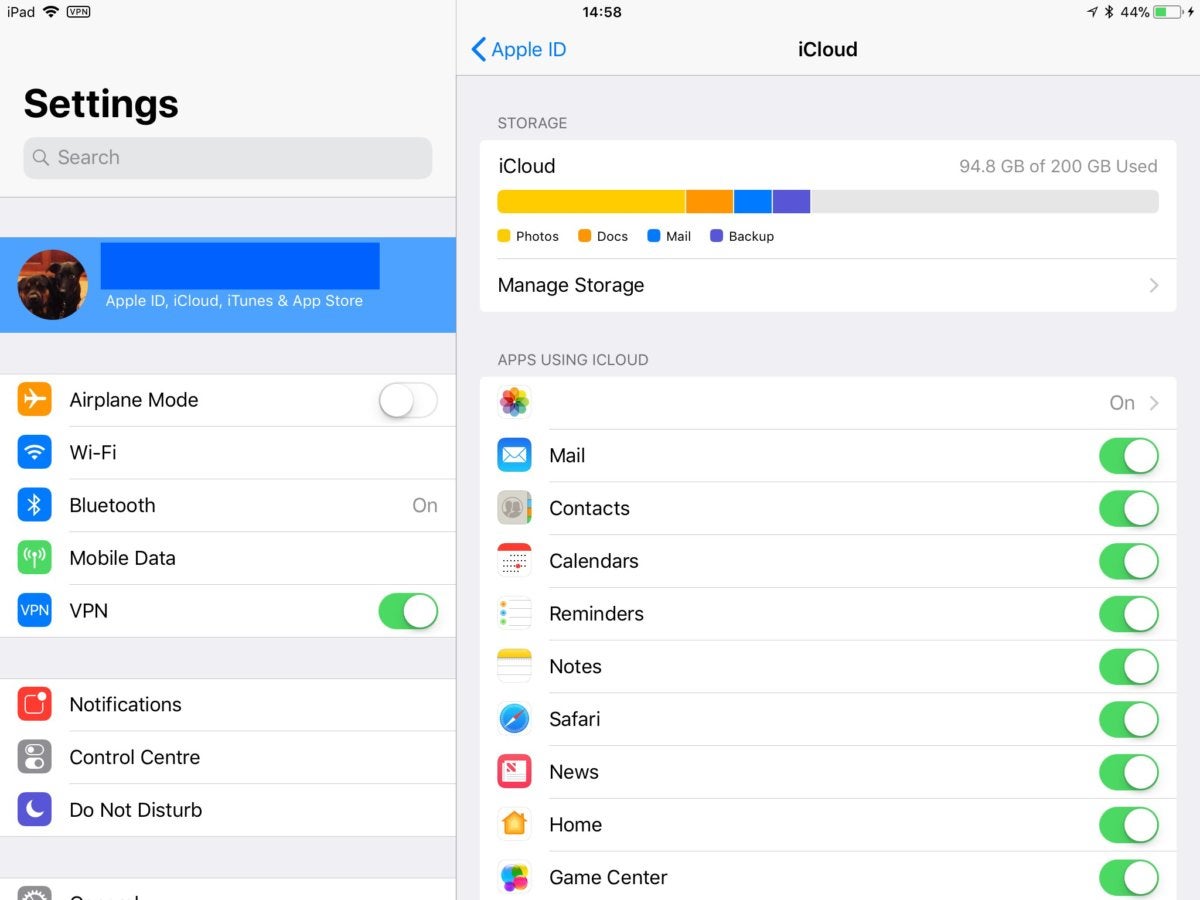 Apple
AppleUnder macOS: Go to System Preferences > iCloud and choose the "Manage..." option at the bottom right of the window.
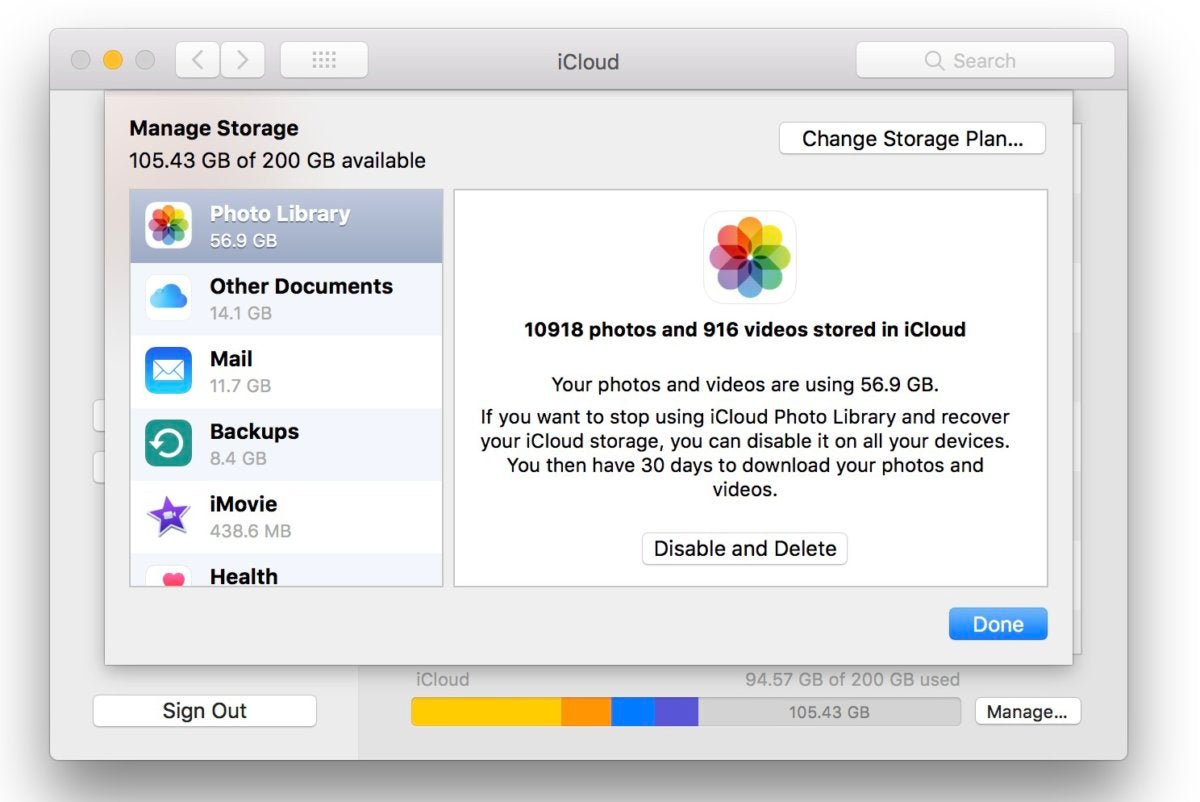 Apple
AppleEither way, you'll see how much storage you're using, what items are using it (like Photos, Documents, Mail, or Backup), and where to turn cloud storage on and off for various Apple apps and services.
How to manage iCloud backup
If you back up iOS devices to iCloud, you'll soon run into trouble if you try to stay under the 5GB storage limit. To reduce the amount of iCloud storage consumed by iCloud backups, you can back up your iOS devices to iCloud. a Mac or PC and delete any existing backups you've created from iCloud.
You don't need to back up your devices to iCloud, although it's convenient; on older Macs and PCs, you can back up via iTunes. Simply connect your device to your computer, launch iTunes (if it doesn't start automatically), and click the device icon that appears on the left of the iTunes window next to the category menu.
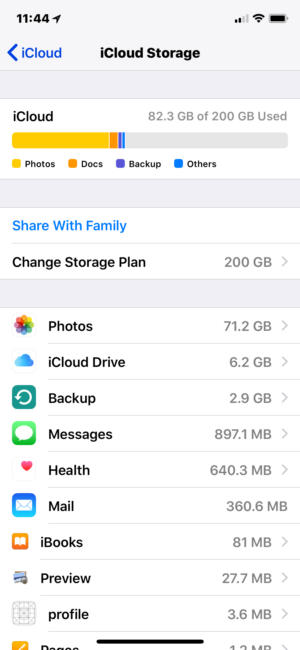 Apple
Apple
iCloud storage can be easily managed on iOS. Select "Backup" to review old backups and delete the ones you no longer need.
Once you've done that, select Summary, then choose This Computer where you'll see Automatic Backup. You will need to check the Encrypt (device name) backup item to keep Health and HomeKit data, and you will need to create a password for it.
In the future, your iOS device(s) will automatically back up to your computer when you're connected, and you'll no longer need to store those backups in your frugal iCloud account. Once you're set up, you can delete your old device backups from iCloud.
On iOS: Tap Settings and go to iCloud > Manage Storage and choose Backup. Here you can review your backups and select which ones you want to delete. When you tap on the red Delete backup option, you will be asked if you are sure about the decision. Tip: Make sure you keep the most recent backup.
On Mac: Open System Preferences > iCloud and choose the "Manage..." option. In the next panel, choose Backups and delete the ones you don't need in the same way as in iOS.
How to put iCloud Drive on a diet
Mac and iOS devices use iCloud to store important files and app data.
Newer Macs can use iCloud to automatically sync and store the contents of your Downloads folder and your desktop. Once these items are available, you can access them from any other Apple device, as long as you're signed in with the same Apple ID. You can also access these items online using a web browser.
This is a useful feature, but if you want to limit your iCloud data, turn it off on your Mac in System Preferences > iCloud > iCloud Drive. There you click the Options button and then uncheck the Desktop and Documents folders. Going forward, these items won't be stored in iCloud, though existing items will remain. To remove these old desktop items and downloads from iCloud Drive, you must manually save them to your Mac:
- In Finder, open iCloud Drive and locate the Documents or Downloads folder.
- Open a new Finder window, select Go > Home
- Now drag and drop items from iCloud Drive to your home directory. The files will be downloaded and saved to your Mac. The process may take some time, depending on the amount of bandwidth and the amount of data you need to move.
- You can then delete the items from iCloud Drive.
Please note that these items will no longer be available on your other devices unless you move them to another service that syncs across all of your systems.
Save your files elsewhere
Both macOS and iOS devices support third-party online storage services like Box, Dropbox, or Microsoft One Drive (which offers 1TB of free storage with an Office 365 subscription). Apple's Files app for iOS also supports third-party services, including Box, Dropbox, and OneDrive. Support makes it seamless: Install the right storage app on your device, sign in, and you can access any data you've stored on those non-iCloud services using the Files app. You no longer need to save these files to iCloud. You can also use Dropbox and OneDrive to automatically save your photos and other images, further reducing your dependency on iCloud.
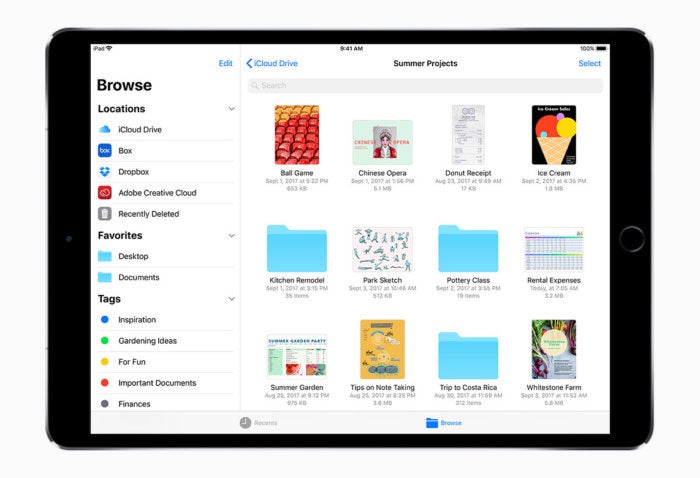 Apple
Apple
The iOS 11 Files app lets you track files no matter what Apple device they're on, and it works with third-party cloud storage providers.
What about the application data?
Do you use all iCloud services? Consider relying only on the essential services you really need to sync between devices in real time, like contacts and calendars, for example. These useful services don't consume a lot of storage space, but they provide a lot of convenience. You can control the Apple services saved in iCloud in Settings, just uncheck the ones you don't need to turn them off.
You can also consider alternatives. For example, Apple's Notes app is becoming an increasingly successful competitor to Evernote, but if you only keep a few notes, you can use the latter's free service to replace Notes in iCloud.
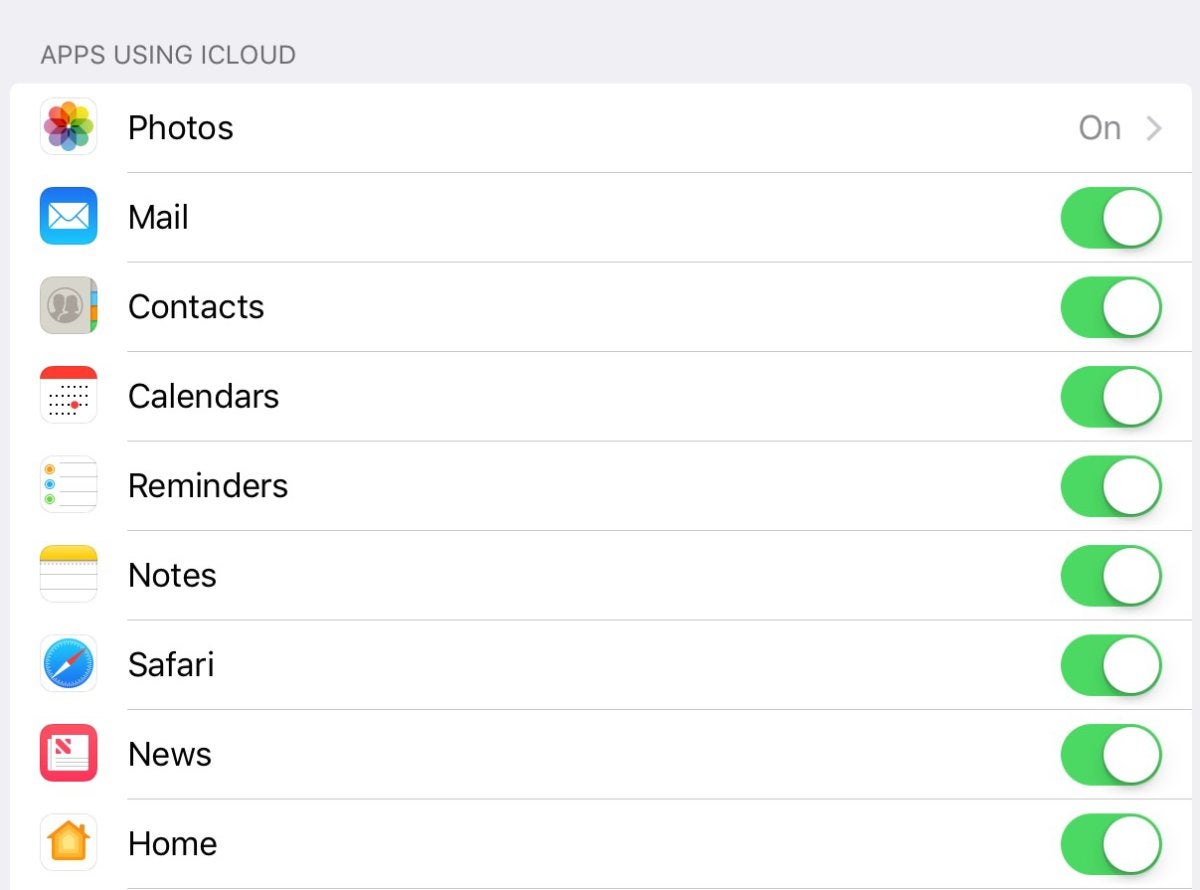 Apple
AppleThere are also many apps that save data to iCloud. To find out which ones work on a Mac, go to System Preferences > iCloud > iCloud Drive; on an iOS device, you control them in Settings > Apple ID > iCloud. Uncheck the apps whose data you don't want to keep in iCloud from the list it finds. Since you might miss some functionality, do a little search by app first.